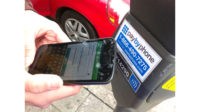It’s been said that the secret to success is mostly just showing up. When it comes to sales of home services, such as HVAC repair and installation, the secret to success is mostly following up. That was the message delivered by three speakers during a webinar put on by lead generator Modernize.
Any business owner that purchases leads, such as an HVAC contractor, often questions their value. They wonder if the leads are weak. Josh Carter, marketing manager for Hatch, said the real problem often is that the follow-up is weak. Hatch provides services for responding to leads.
“Don’t immediately default to saying the leads are bad,” Carter said.
Megan Wolfe, Modernize’s manager of client strategy and development, shared an example of the importance of following up from a study of window replacement companies. Only responding to the easy leads brought in revenue of $72,000. Taking a more active approach increased that $198,000. A very active approach increased the revenue up to $315,000.
Response time, or “speed to lead,” makes a big difference for many types of home services, Wolfe said. Beating competitors to a customer increases sales by up to 80%. Wolfe, who lives in Austin, Texas, said this was especially true for fields such as HVAC. In the city’s crushing summer heat, the first to respond gets the job.
“If it’s a call for an HVAC replacement, you better believe that speed is going to win the job,” she said.
Getting Beat Isn’t The End
Carter said that consumers are seven times more likely to set an appointment with a contractor who reaches out in the first hour after the lead is generated. That contractor is 21 times more likely to close that customer by responding immediately.
Still, getting beat isn’t the end of the story. Chase Emerson, vice president of sales operations and demand for PosiGen, said contractors should keep following-up. Wolfe said data from Modernize shows that 45% of revenue is booked at least a week after the initial lead. In fact, 15% of total sales closed more than 30 days after the lead was created.
There are two types of customers, she said — doers and planners. People with a broken air conditioning are obviously doers. Planners are people considering upgrading their systems. Wolfe said contractors need to tailor their follow-ups appropriately. Whatever approach they take, contractors need to continue following up with potential customers.
“If you don’t one-call close that appointment, make sure you have a follow-up strategy,” Carter said.
Written Communication Works Best
There are more ways to reach consumers these days than ever. Texts are becoming the most effective method in part because they allow consumers to respond at their own pace. Phones calls are becoming increasingly less effective.
“Folks are less likely to answer numbers they don’t recognize,” Emerson said.
Emails are the most popular method of contact, Wolfe said. Whatever method an HVAC contractor uses to follow up, there needs to be a system in place for that to happen. This means setting reminders and having someone assigned to perform the follow-up.
Carter recommends different types of messages for each follow-up. After the introductory message comes a discovery question the next day. The next day’s message is an attempt to set a date. At the end of the week, send a message saying the company is closing the customer’s file, Carter said. This gives the customer extra motivation to take action.
Follow-ups need to continue after the sale is closed. This is especially true today, when labor and supply shortages can delay projects. Keeping a customer in the loop keeps that customer happy, Wolfe said.
“Happy customers are going to turn into referrals,” she said.











